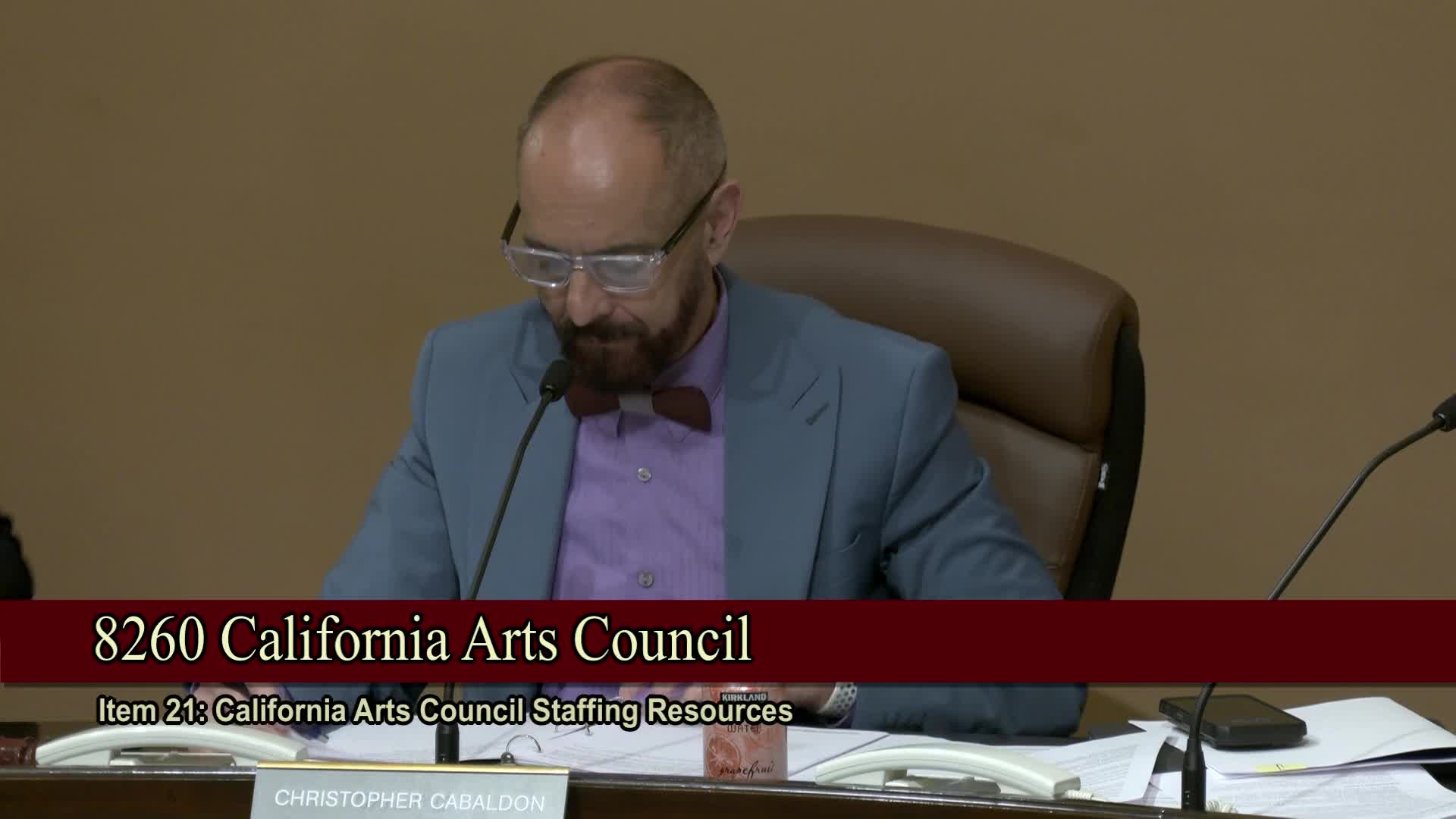California Arts Council expands cultural districts program to celebrate diverse communities
May 01, 2025 | California State Senate, Senate, Legislative, California
This article was created by AI summarizing key points discussed. AI makes mistakes, so for full details and context, please refer to the video of the full meeting. Please report any errors so we can fix them. Report an error »

The California Arts Council is gearing up to expand its Cultural Districts Program, a move that aims to enhance community identity and economic opportunity across the state. During a recent Senate Budget and Fiscal Review Subcommittee meeting, Executive Director Danielle Bridal highlighted the importance of cultural districts as vital spaces for celebrating local heritage and fostering economic growth.
Bridal emphasized that California's arts and cultural sector is a significant contributor to the state's economy, boasting over 16,000 nonprofit organizations and generating $18.67 billion in assets. However, she noted that many communities, particularly those historically underrepresented, lack the necessary support and recognition. This is where the Cultural Districts Program comes into play, serving as a tool to uplift these communities.
Senator Smollett Cuevas raised concerns about the need for investment in cultural assets, particularly in areas like South Central Los Angeles, which are rich in cultural history but often overlooked. Bridal responded by affirming that cultural districts not only provide economic benefits but also serve as "anchors" for community identity and pride. The program is set to reopen applications on May 20, with new designations expected by December.
Kristen Margolis, the Council's Director of Programs, added that the initiative will focus on underserved areas, utilizing the Healthy Places Index to prioritize communities that have been historically marginalized. This approach aims to ensure that the benefits of cultural recognition and funding reach those who need it most.
The upcoming rollout of the Cultural Districts Program is seen as a crucial step in addressing gaps in representation and support for diverse cultural communities throughout California. As the state prepares for significant events like the Olympics and the World Cup, the opportunity to showcase its rich cultural tapestry is more important than ever. The Council is committed to making California a place where every community can thrive and be recognized for its unique contributions to the state's identity.
Bridal emphasized that California's arts and cultural sector is a significant contributor to the state's economy, boasting over 16,000 nonprofit organizations and generating $18.67 billion in assets. However, she noted that many communities, particularly those historically underrepresented, lack the necessary support and recognition. This is where the Cultural Districts Program comes into play, serving as a tool to uplift these communities.
Senator Smollett Cuevas raised concerns about the need for investment in cultural assets, particularly in areas like South Central Los Angeles, which are rich in cultural history but often overlooked. Bridal responded by affirming that cultural districts not only provide economic benefits but also serve as "anchors" for community identity and pride. The program is set to reopen applications on May 20, with new designations expected by December.
Kristen Margolis, the Council's Director of Programs, added that the initiative will focus on underserved areas, utilizing the Healthy Places Index to prioritize communities that have been historically marginalized. This approach aims to ensure that the benefits of cultural recognition and funding reach those who need it most.
The upcoming rollout of the Cultural Districts Program is seen as a crucial step in addressing gaps in representation and support for diverse cultural communities throughout California. As the state prepares for significant events like the Olympics and the World Cup, the opportunity to showcase its rich cultural tapestry is more important than ever. The Council is committed to making California a place where every community can thrive and be recognized for its unique contributions to the state's identity.
View full meeting
This article is based on a recent meeting—watch the full video and explore the complete transcript for deeper insights into the discussion.
View full meeting
